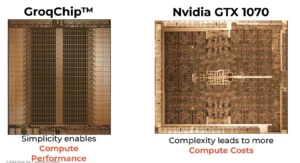
Introduction
In an era where technology evolves at breakneck speed, cognitive computing emerges as the next frontier in artificial intelligence (AI). But what exactly is cognitive computing? It’s a blend of computer science and cognitive science – the study of the human brain and how it works. This technology is not just about programming computers to perform tasks; it’s about teaching them to think and learn like us, humans.
Follow us on Linkedin for everything around Semiconductors & AI
What is Cognitive Computing?
Cognitive computing represents a significant leap in the capabilities of artificial intelligence systems. It refers to machines that are designed to simulate human thought processes. In essence, cognitive computing systems are made to think, learn, and make decisions in a manner that is remarkably similar to the way humans do.
Cognitive computing is seen as a major contender for the future of AI due to several key capabilities:
- Mimicking Human Learning: Cognitive systems can learn and adapt from data, similar to how humans gain knowledge from experience. This allows them to handle complex situations and improve over time .
- Data Powerhouse: They are built to process massive amounts of information from various sources (text, images, video) and make sense of it. This is crucial for real-world applications where data is abundant.
- Reasoning and Explanation: Unlike traditional AI that might just provide an answer, cognitive systems can explain their reasoning behind the answer. This transparency is essential for building trust and understanding in areas like healthcare or finance.
- Human-like Interaction: These systems can potentially understand and respond to natural language, making interaction with AI more intuitive and user-friendly.
Overall, cognitive computing offers a more nuanced and human-like approach to AI, which is why it is considered a frontrunner for the future of the field.
Read More: Top 5 Upcoming Apple Products for the Next Decade – techovedas
Understanding Cognitive Computing With An Analogy
Suppose you have a super intelligent research assistant. This assistant, unlike a traditional one who follows instructions, can actually understand your research and help you think through it.
Traditionally, computers are like basic assistants. You tell them exactly what to do, like finding specific keywords or running calculations. They’re great at following instructions, but not so good at grasping the bigger picture.
Cognitive computing is like your super intelligent assistant. It uses techniques inspired by the human brain to analyze information, identify patterns, and even learn from experience. It can:
- Read and understand vast amounts of text, like research papers.
- Recognize objects and faces in images and videos.
- Make connections between seemingly unrelated data points.
This allows it to not just follow instructions, but to actually assist you in your thinking process. It can suggest new research avenues, point out potential flaws in your reasoning, and even generate creative solutions.
Read More: What’s the Dynamic Relationship Between Elon Musk’s Ventures and NVIDIA – techovedas
IBM’s NorthPole Processor

The NorthPole processor represents a leap forward in cognitive computing. Cognitive computing addresses the limitations of traditional computing architectures, which result in inefficiencies known as the Von Neumann bottleneck due to the separation of memory and processing units. This bottleneck slows down processing speed and increases energy consumption as data is shuttled back and forth between the memory and the processor.
IBM’s NorthPole processor integrates memory and processing units, significantly reducing the need to transfer data externally. The inspiration for this design comes from the intertwined structure of the human brain, where processing and memory are intertwined. As a result, the NorthPole processor can perform AI tasks like image recognition with much higher speed and energy efficiency compared to previous technologies.
This advancement is crucial for the development of AI applications that require real-time processing and decision-making, such as autonomous vehicles and advanced robotics.
Conclusion
As cognitive computing continues to evolve, it promises to reshape our world, making technology more intuitive and responsive to our needs. The future of AI is here, and it’s cognitive – a testament to the limitless potential of human ingenuity and machine intelligence working in harmony.




